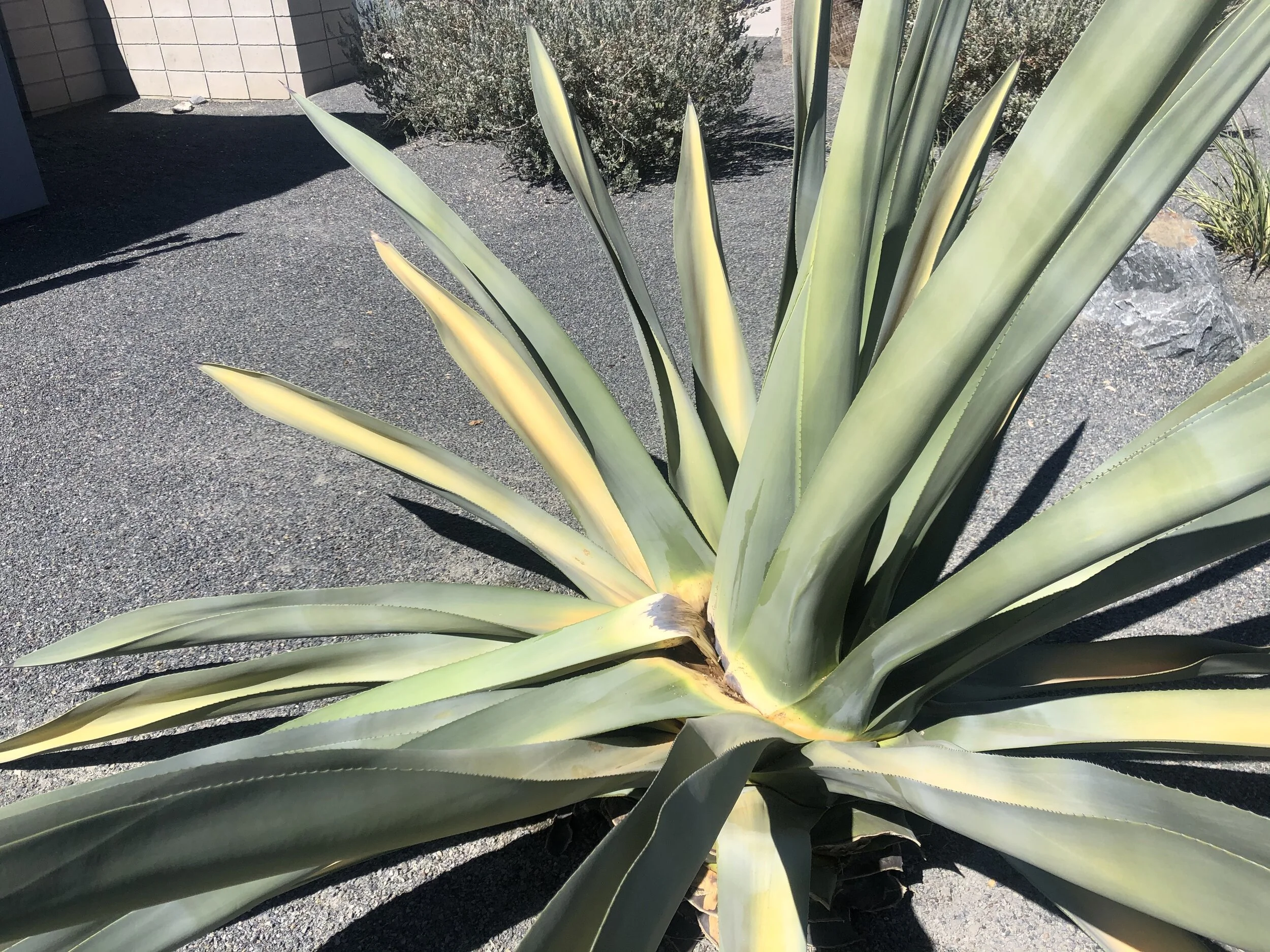WARNING FOR YOUR YUCCAS! - Watch out for the Agave Snout Nosed Beetle!
/Watch-Out! The Coachella Valley is currently under major infestation of the Agave Snout Nosed Beetlet! Primarily praying on Agave and Yucca plants, this terrible beetle can infest an otherwise healthy large yucca and turn into a pile of mush in a matter weeks. Believe me, I know as I had to learn the hard way and get an advanced education in desert pests in a matter of days, while our beautiful front yard was decimated (as well as several of our neighbor’s yards).
As we learned too late, there are ways to keep this pest in check. Make sure that your landscaper is aware of the pest and is on the lookout for it as many missed the signs.
The agave snout-nosed weevil is a half-inch-long black beetle with a downward-curving proboscis that enables it to pierce an agave’s core, where it lays its eggs. Grubs hatch, consume the agave’s heart, then burrow into the soil to pupate. The weevil (Scyphophorus acupunctatus)---once prevalent only in desert regions and Mexico---is spreading rapidly throughout the US and abroad, earning it the dubious distinction of being one of the "Top 100 Worst Global Invasive Species."
According to the Global Invasive Species Database, "Scyphophorus acupunctatus is becoming a major pest of native Agavaceae and Dracaenaceae species worldwide. From Mexico, it has decimated populations of Agave crops there, in particular those used in the tequila industry. The importation of ornamental Agaveplants worldwide has facilitated S. acupunctatus to establish in many parts of the world, particularly in Central America and the Caribbean, in Africa, Asia and South America."
Is your agave infested? Look for damaged tissue where leaves meet stem. The lowest leaves will appear wilted, and may slope unnaturally downward while the center cone remains upright. The plant, no longer anchored by roots, will rock when pushed. When an infestation is well underway, it's possible to shove the agave over onto its side. It'll break at soil level, revealing a mushy, foul-smelling core infested by plump, squirming, half-inch, cream-colored grubs with brown heads.
In my YouTube video, "Agave Snout Weevil Prevention and Treatment," I demonstrate how to inspect nursery agaves, show resistant varieties, and interview agave expert Kelly Griffin at an infested colony of Agave americana. Kelly also talks about applying a systemic insecticide as a prophylactic (preventive) option.
How one homeowner does it: Succulent collector Jeanne Meadow is well versed in the fauna and flora of her large garden in Fallbrook, California, midway between Riverside and San Diego. Jeanne, an ace researcher, has become an expert on the agave snout-nose weevil. She says people tend to assume most nursery plants are pest-free, yet that’s the primary way snout weevil enters gardens. When an agave in her garden shows signs of infestation, she removes it and every plant for several feet surrounding it. Then she sifts the soil and picks out grubs and beetles. “It’s a huge undertaking,” Jeanne says. “Fortunately they’re slow crawlers."
To remove a diseased agave, here's Jeanne's method:
1. Place a tarp around the plant.
2. Position a wheelbarrow nearby. Make sure the tarp covers the ground between it and the agave.
3. Dig up the agave and put in the wheelbarrow.
4. Dig out more dirt to a depth of 12 inches (deeper if you find grubs) and about 12 inches from where the base of the plant was.
5. As you transfer the soil to the wheelbarrow, inspect it for grubs and weevils.
6. The beetles "are hard to crush," Jeanne says. "I use a hammer."
7. Take the wheelbarrow to a paved area, like your driveway, so if beetles escape they're easy to spot.
8. Transfer into heavy-duty trash bags, sprinkle contents with insecticide, and triple-tie.
9. Seal any rips with duct tape.
10. Drench the soil where the agave was with insecticide.
Aren't insecticides bad for the environment? Although neither Jeanne nor I advocate inorganic pesticides, and we certainly aren't licensed pest control experts, we strongly believe that the responsible thing to do is to share knowledge with others based on research and personal experience, and to do what we can to prevent the beetle from spreading. "This is an emergency situation," Jeanne says. "The pest is spreading like crazy and has to be brought under control." According to agave experts, growers, and pest management specialists, the best approach is preemptive: drench the soil around healthy agaves with a systemic insecticide that has imidacloprid as the main ingredient.*
Hire a licensed pest control expert. The going rate is $175/hr., but you'll know for certain that everything is done safely and protects the environment while eradicating the pest from your property. One in the San Diego area is Chris Mizoguchi, chrisagpestcontrol@hotmail.com.
How to preventatively treat your agaves. The goal is to drench the agave's roots. Twice a year, in spring and fall, here's what I do:
1. The night before, soak (hose-water) the soil at the base of each agave to aid penetration.
2. Read and follow the label directions. Be sure to wear gloves and protect your skin and eyes.
3. To mix the solution, I use a hose, a 3-to-5 gallon bucket, and a stick for stirring. Product labels don't say how much concentrate per gallon of water for agaves, so I go with the ratio for shrubs. (If using Compare-N-Save Systemic Tree and Shrub Insect Drench, it's 3 oz. per foot of height per gallon of water.)
4. Agaves naturally funnel rainwater water to their roots, so if you slosh the solution where lowest leaves meet the core, you'll effectively drench the soil below them at the base of the plant.















